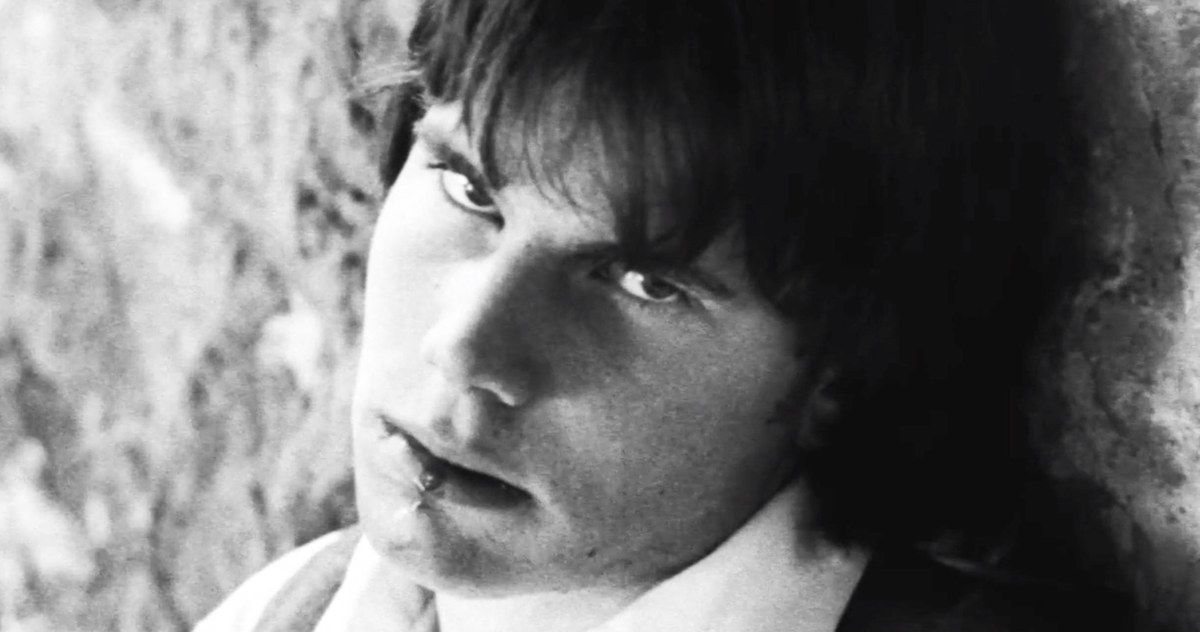Long lost for more than 40 years, Taking Tiger Mountain was recently recovered and restored in a newly prepared edition supervised and directed by the film's original co-director Tom Huckabee. Taking Tiger Mountain will premiere on Sunday, February 10th at the Oxford Film Festival, and will later be released on home video.
In a dystopian future, American draft dodger Billy Hampton (Bill Paxton in his first role), 19, is brainwashed and programmed by militant feminists to assassinate the Welsh minister of prostitution. Lurching unwittingly toward his goal, he makes a series of furtive connections with societal outliers like himself, including a feral child, a gentle prostitute, a sadomasochistic delinquent, a lovelorn androgyne, a hippie dope dealer, and a mute nymphomaniac, while fending off predators who would sell him into sex slavery. Eventually, he is forced to focus on his mission and face the dreadful dilemma tormenting his psyche: to kill or not to kill.
From director Tom Huckabee: In 1975, Kent Smith, 29, and Bill Paxton, 19, produced approximately half of a feature film in Wales with an amateur cast and crew and a $20,000 budget. The script by Smith was based on the 1973 kidnapping of John Paul Getty III. Their stash of 35mm B&W negative was comprised of "short ends" from Bob Fosse's Lenny. Their camera was an old Arriflex adapted for Techniscope, a wide screen format which required half as much stock as Cinemascope.
They intended to shoot in Morocco, as dictated by the script, which was influenced by the work of William Burroughs, complete with illegal drugs, polymorphous perversity, international intrigue, and existential paranoia.
The duo flew to Spain, where they rented a car and ferried across the Mediterranean to Tangiers, where they were arrested for attempting to make a movie without government sanction. Kent secured their release with a bribe.
Back in Spain, Bill remembered he had friends in Wales on whom he could rely. They spent the next six weeks in Wales casting and crewing, adapting the script to fit the locale, and running and gunning.
Influenced by Italian cinema, they recorded no sound on set, intending to dub the dialogue with professional voice actors in Hollywood. After money ran out, they returned to LA, where I was privileged to see all ten hours of their dailies. Kent attempted for several years to raise finishing funds to no avail.
Four years later in my last year of film school at UT Austin, I persuaded Kent to lease me the footage, from which I culled 60 minutes of provocative footage. After assembling a small team of students, faculty, and local professionals, we rewrote the story setting it in a dystopian future, adding themes of militant feminism, geo-political upheaval, and mind control. New scenes were shot, and the sound was built from scratch.
The influence of William Burroughs grew more pronounced, to which I added the counterbalance of Valerie Solanas, author of The S.C.U.M. Manifesto. (SCUM stands for the Society for Cutting Up Men.) From Burroughs, I secured the use of text from his novella Blade Runner (a movie), which was worked into the script.
Completed in 1983, Taking Tiger Mountain was briefly distributed by Horizon Films and exhibited In the US by the Landmark theater chain. Despite some positive reviews, the critical consensus judged it a noble experiment with bits of brilliance, fatally flawed, its back-story more interesting than the film itself. My inner critic aligned with the naysayers. However, through the decades, I held the belief that there was a good movie longing to be born from the source material.
In 2016, Etiquette Pictures acquired the digital rights and transferred the Techniscope original to 4K. This inspired me to revisit the project with the aim of creating a version that was as good as the story behind its making. To the extent that was achieved, the film warrants consideration as a new entity. - Tom Huckabee, 9/14/18, Fort Worth, TX
https://player.vimeo.com/video/296300544

